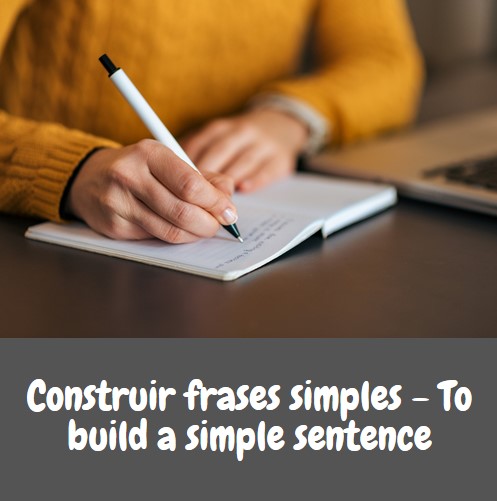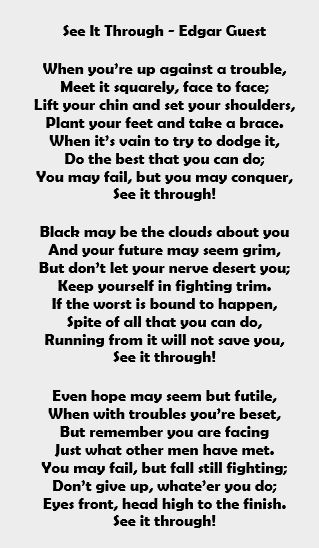
Iniciación al inglés – Repaso de conceptos para conversaciones básicas
Formación del plural
Las palabras terminadas en -o precedida de consonante, añaden -es.
Ej.: potato - potatoes; tomato - tomatoes
Pero, algunas palabras de origen extranjero, como: Radio, piano, photo… añaden -s
Artículos
Omisión del articulo determinado:
a) con las comidas que se toman habitualmente durante el día, si se habla de ellas sin
especificar:
Ej.: el desayuno: breakfast
el almuerzo: lunch
la cena: supper
b) con palabras como "school", "work", "home", cuando las consideramos como lugares a
los que vamos normalmente a estudiar, a trabajar, a descansar.
Ej.: Voy al trabajo temprano - I go to work early
Los niños van a la escuela en autobús - The children go to school by bus.
Me voy a casa - I'm going home.
Más nombres compuestos
Son muy corrientes en inglés y pueden formarse con distintos elementos.
Entre ellos:
a) dos nombres:
Ej.: postcard, bedroom, telephone number
b) forma -ing + nombre: living room, dining room.
Pueden escribirse de diferentes maneras: juntos, separados por un guión, o en dos palabras. No hay regla fija.
Recuerda esto:
- vayan juntos o separados, sólo se pone en plural el segundo (el primero llega a convertirse en un adjetivo).
- a veces se unen de tal manera que pierden su significado como palabras aisladas y forman una nueva.
Ej.: bed – cama / room – habitación = bedroom – dormitorio
living - vivir, viviendo / room – habitación = living room - cuarto /sala de estar
Adjetivos y adverbios
LITTLE significa "poco" o "pequeño" (en tamaño, estatura o cantidad). Si va acompañado del artículo, A LITTLE, se traduce por "un poco".
EVERY, generalmente va acompañado de nombres en singular, pero tiene sentido plural.
Ej.: every day = todos los días; every Monday = todos los lunes.
BEFORE y AFTER. El primero significa ANTES / DELANTE DE, y el segundo, DESPUES DE. No llevan preposición, aunque vayan seguidos de otra palabra.
HERE y THERE = aquí; allí / allá.
ABOVE = arriba (adverbio); también se usa como adjetivo:
At the above address = En la dirección (escrita) arriba.
Pronombres
Los pronombres personales complemento van siempre después del verbo o de una preposición. NO los confundas con los sujetos.
Sujeto
- I - yo
- You - tú/ usted
- He - él
- She - ella
- It - (Cosa o animal)
- We - nosotros-as
- You - vosotros-as/Vds.
- they - ellos-as
Complemento
- Me = me, a mí
- You = te, a ti/le, a usted
- Him = le, lo, a él
- Her = le, la, a ella
- It = le, la, lo (a Cosa 0 animal))
- Us = nos, a nosotros-as
- You = os, a vosotros-as / a ustedes
- Them = les, los, las/ a ellos-as
(no suelen Omitirse en inglés)
Ej. La amo (a ella) = I love her.
(Tú) lo escuchas (a él)/Lo estás escuchando = You're listening to him.
Preposiciones in, on, at
- IN - Con partes del día, estaciones, meses y años.
Ej.: in the morning / afternoon/ evening = por la mañana /tarde / noche
In spring = en primavera.
- ON - Con los días de la semana.
Ej.: on Monday = el lunes; on Wednesdays = los miércoles.
- AT - Con la hora y el fin de semana.
(At) what time does John go home? ¿A qué hora va John a casa?
At seven = a las siete. (En las preguntas, generalmente se omite).
What do you do at the weekends? ¿Qué haces los fines de semana?
WH - Questions
Se llaman así porque la mayoría empieza por "wh-": what, where, when... (también está "how") y dan la clave de la información que se pide en las preguntas abiertas: qué, dónde, cuándo, cómo...
WHO = quién, quiénes. Como sujeto se diferencia de los anteriores en que el verbo que lo acompaña va en forma afirmativa, no lleva auxiliar, aunque se trate de una pregunta.
Ej: Who wants to go to the cinema? ¿Quién quiere ir al cine?
Verbos
En inglés se usa el presente continuo para indicar que una acción se está desarrollando en el momento en que se habla. Cuando queremos expresar acciones habituales o repetidas con cierta regularidad, se usa el presente simple.
Presente simple.
Sujeto + verbo + complementos (si los hay).
-¡Atención a la tercera persona del singular (he, she, it): el verbo termina en -s (-es)!
Sujeto + auxiliar negativo DON'T (DO NOT) + verbo...
-¡Atención a la tercera persona del singular!:
Sujeto + auxiliar negativo DOESN'T (DOES NOT) + verbo...
Auxiliar DO + sujeto + verbo + ...?
Tercera persona singular: Auxiliar DOES + sujeto + verbo + ...?
¡Cuidado! En las preguntas y negaciones de la tercera persona del singular, el verbo pierde la -s (-es), que pasa al auxiliar: DO(ES) -DO(ES)N'T.
- DO y DOES son también las dos formas que tiene el presente del verbo TO DO = hacer, en las frases afirmativas. Como auxiliar, su traducción es "NO".
Ej.: He does his homework in the evenings = El hace sus deberes por las noches.
(verbo to do)
I don't do them in the evenings = (Yo) no los hago por las noches.
(auxiliar) (verbo)
La -s (-es) de la tercera persona sigue las mismas reglas de la formación del plural.
RECUERDA:
- Regla general: -s
- verbos terminados en s, ss, sh, ch, ... : -es
- verbos terminados en o: -es
- verbos terminados en consonante + y, pierden la "y" y añaden -ies.
El verbo To Like
El presente de este verbo puede servirnos de ejemplo para la formación del presente simple, en general. Sólo has de tener en cuenta dos cosas:
1) La tercera persona del singular de algunos verbos se forma con -es
2) la traducción de "to like" es un poco complicada.
PRESENTE SIMPLE
Forma afirmativa
- l like = me gusta
- You like = te gusta, le gusta (a Vd)
- He likes = le gusta (a él)
- She likes = le gusta (a ella)
- Itlikes = le gusta (al gato)
- Welike = nos gusta
- You like = os gusta, les gusta(a Vds)
- They like = les gusta (a ellos-as)
Forma negativa
- I don't like
- You don't like
- He doesn't like
- She doesn't like
- It doesn't like
- We don't like
- You don't like
- They don't like
Forma interrogativa
- Do (I) like ...?
- Do you like...?
- Does he like...?
- Does she like...?
- Does it like ...?
- Do we like ...?
- Do you like ...?
- Do they like ...?
El verbo TO LIKE significa GUSTARLE (a uno).
Posibilidades:
a) Me gusta "algo". En este caso, el verbo va seguido del nombre de la cosa (o animal). Cuando hablamos en general, este nombre no lleva artículo, tanto si va en singular como si va en plural. Si no se menciona el nombre, usamos el pronombre personal complemento.
Ejemplos: A Katie le gustan los gatos = Katie likes cats.
Me gusta la cerámica = I like pottery.
¿Te gusta (una cosa)? = Do you like It?
b) Me gusta "alguien". El verbo en este caso va seguido del nombre de la persona o del
pronombre correspondiente.
Ej.: A John le gusta Louise = John likes Louise.
A Louise le gusta él = Louise likes him.
c) Me gusta "hacer algo” Cuando hablamos de lo que nos gusta hacer normalmente, esta acción va en gerundio (lleva la terminación -Ing).
Ej.: Me fusta nadar = I like swimming.
A ellos no les gusta jugar al fútbol = They don't like playing football.
Esto es aplicable a verbos como: TO HATE = odiar; TO LOVE = amar (encantarle a uno); TO PREFER = preferir.
Verbo TO HAVE
Este verbo no tiene nada que ver con TO HAVE GOT = tener. Significa comer, beber, tomar o recibir, según el contexto.
Presente simple:
Tiene dos formas:
- HAVE, para todas las personas, excepto la tercera del singular.
- HAS, para la tercera persona del singular (en afirmaciones).
En las preguntas y negaciones funciona como el verbo TO LIKE, o sea, necesita el auxiliar DO / DOES.
La respuesta breve
Se forma con YES o NO, el sujeto (siempre en forma de pronombre) y el auxiliar DO o DOES.
Ej.: Do you like dogs? Yes, I do / No, I don't.
Does Katie have coffee for breakfast? Yes, she does / No, she doesn't.
CAN
Es el presente de otro verbo "especial". Significa: saber (hacer algo), tener destreza o habilidad. Tiene una sola forma -can- y acompaña siempre, como auxiliar, a verbos de acción (en infinitivo, sin TO).
Ej.: Sé leer inglés = I can read English.
No sabe cocinar (él) = He can't (cannot) cook.
¿Sabes nadar? = Can you swim?
Observa que sigue la regla de los verbos especiales: forma las negaciones con NOT - CANT- (cannot es menos corriente) y las preguntas invirtiendo el orden:
1) auxiliar CAN; 2) sujeto; 3) verbo principal ...?
La respuesta breve:
- Afirmaciones: Yes + sujeto (pronombre) + can.
- Negaciones: No + sujeto (pronombre) + can't,
Ej.: Can you speak German? Yes, I can / No, I can't.
Can your sister ski? Yes, she can / No, she can't.”.
Adblock test (Why?)






